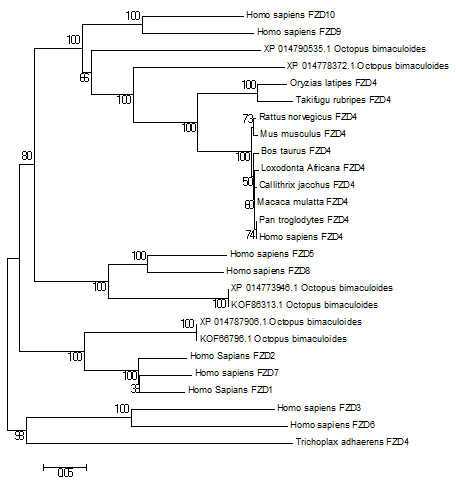Frizzled Family
Abstract
Background: Frizzled family members belong to G-protein coupled receptors and encode proteins accountable for cell signal transduction, cell proliferation and cell death. Members of Frizzled receptor family are considered to have critical roles in causing various forms of cancer, cardiac hypertrophy, familial exudative vitreoretinopathy (FEVR) and schizophrenia.
Results: This study investigates the evolutionary and structural aspects of Frizzled receptors, with particular focus on FEVR associated FZD4 gene. The phylogenetic tree topology suggests the diversification of Frizzled receptors at the root of metazoans history. Moreover, comparative structural data reveals that FEVR associated missense mutations in FZD4 effect the common protein region (amino acids 495–537) through a well-known phenomenon called epistasis. This critical protein region is present at the carboxyl-terminal domain and encompasses the K-T/S-XXX-W, a PDZ binding motif and S/T-X-V PDZ recognition motif.
Conclusion: Taken together these results demonstrate that during the course of evolution, FZD4 has acquired new functions or epistasis via complex patter of gene duplications, sequence divergence and conformational remodeling. In particular, amino acids 495–537 at the C-terminus region of FZD4 protein might be crucial in its normal function and/or pathophysiology. This critical region of FZD4 protein may offer opportunities for the development of novel therapeutics approaches for human retinal vascular disease.
Keywords: Multigene family, G-protein coupled receptors, Frizzled, FZD4, Metazoans, Phylogenetic analysis, Structural analysis, Familial exudative vitreoretinopathy

Figure 1: neighbor joining tree explaining the Frizzled family paralogues
Useful references: